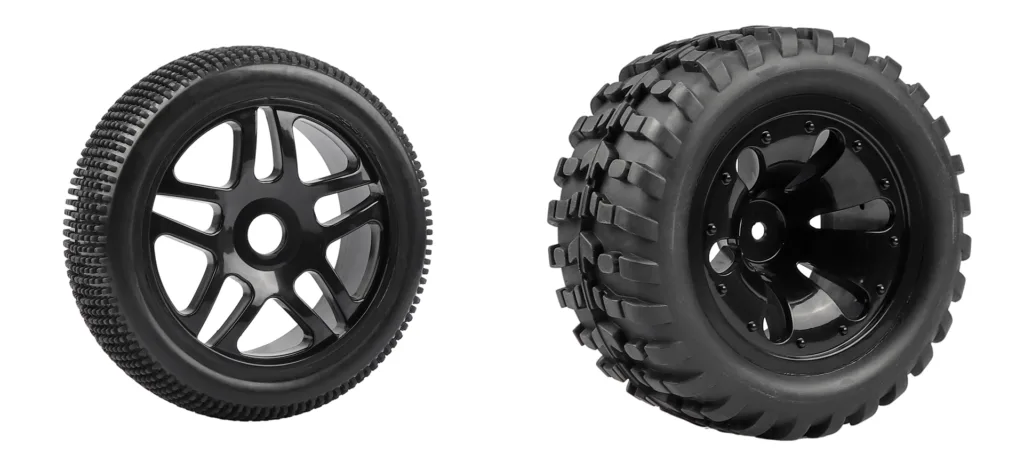As an RC model car player, we often seek faster speed and stronger performance. To improve the speed of your car, modification is essential. So, here are 16 recommended modifications to make your RC car faster and stronger.
1.Aerodynamics of the Car Body – Body Shell – Spoiler
- Purchase a more streamlined body shell to optimize aerodynamic performance, significantly improving speed by reducing the impact of wind resistance.
- Alternatively, you can modify the shape of the existing body shell to enhance aerodynamics.
- Installing a spoiler creates a downward pressure on the car during high-speed movement, providing greater traction.
2.Battery Upgrade – Milliampere-hour (mAh) – Capacity – Discharge Power
The usual model cars offer two types of batteries:

- Nickel Metal Hydride (NiMH) Battery
- Lithium polymer (Li-Po) Battery
If you are currently using a Nickel Metal Hydride (NiMH) battery, you will notice a significant leap in your car’s performance when you switch to a Lithium polymer (Li-Po) battery.
Li-ion batteries are lighter, contributing to a reduction in the weight of the car. Additionally, they provide more powerful electrical output, offering higher burst power.
There are several parameters to consider for Li-Po batteries:

- S Number (Cell Count): 1S=3.7V, 2S=7.4V, and so on. 2S indicates that the battery consists of 2 cells.
- MAh (Battery Capacity): For example, 5000mAh means the battery can discharge at a rate of 5000 milliamps for 1 hour. A higher mAh value extends the usable time of the battery.
- C Rating (Discharge Rate): For instance, A battery has 30C and 5000Mah,means the maximum discharge rate is 30 times the capacity (mAh), i.e., 150,000 milliamps. A higher C rating results in stronger burst power, but it also comes with a higher price.
3.ESC Upgrade
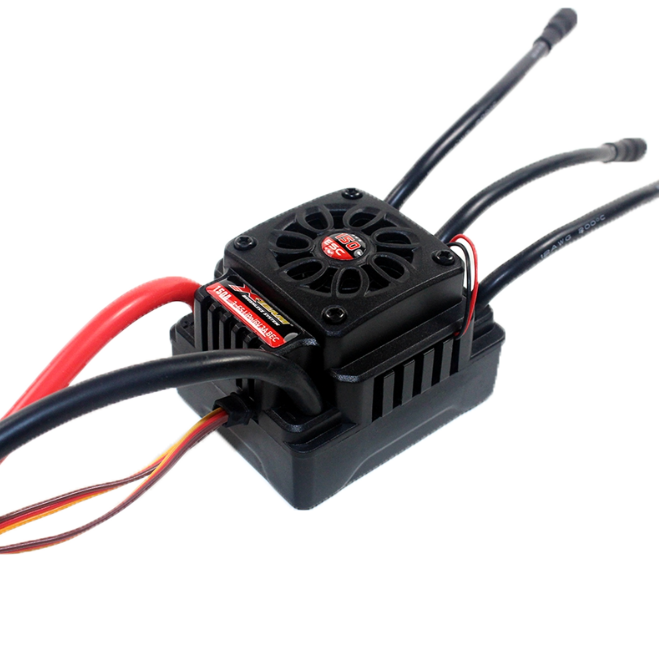
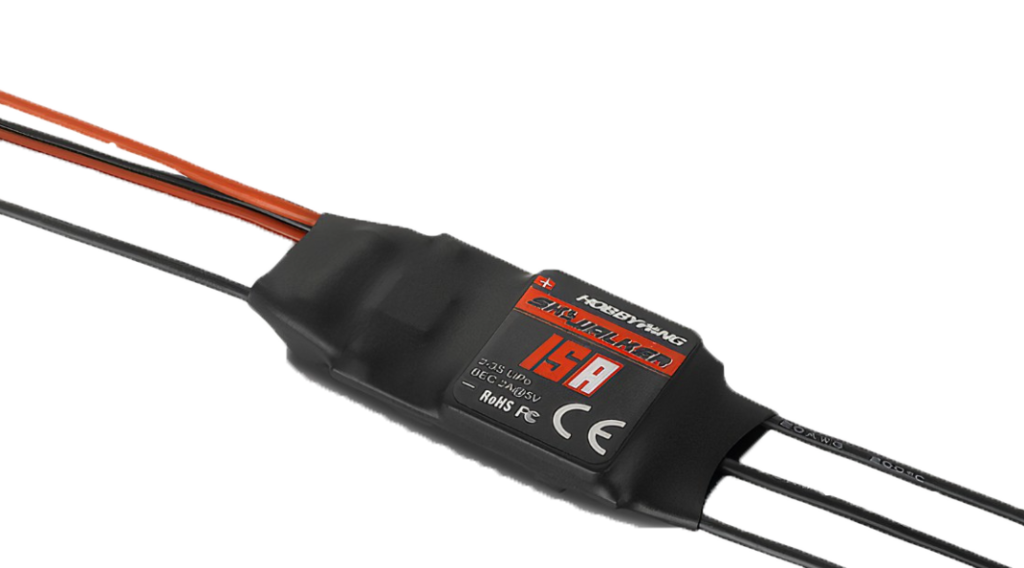
ESC is divided into brushed and brushless types.
They are respectively matched with brushed motors and brushless motors.
When you aim to increase the speed of your car by changing the battery, you must first ensure that your ESC matches the battery.
The casing of the ESC usually has markings like 2S-3S, 3S-4S, etc., which correspond to the battery’s S number.
For example, 3S-4S means you can use a minimum of a 3S battery and a maximum of a 4S battery.
If you want to use a larger battery, such as 6S, you will need to replace the ESC with a larger one to match the battery.
At the same time, you should also pay attention to the battery’s C rating (discharge rate), ensuring that the maximum voltage of the battery does not exceed the ESC’s acceptable range; otherwise, it could lead to damage to the ESC.
4.The choice of motor
Upgrading the motor to increase the speed of your RC car is a common modification. When choosing a new motor, you need to consider key factors and ensure compatibility with your existing electronic components. Here are some simple explanations:
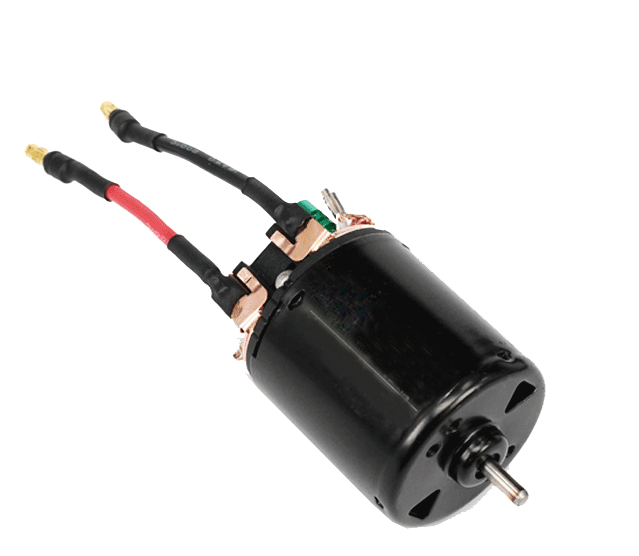
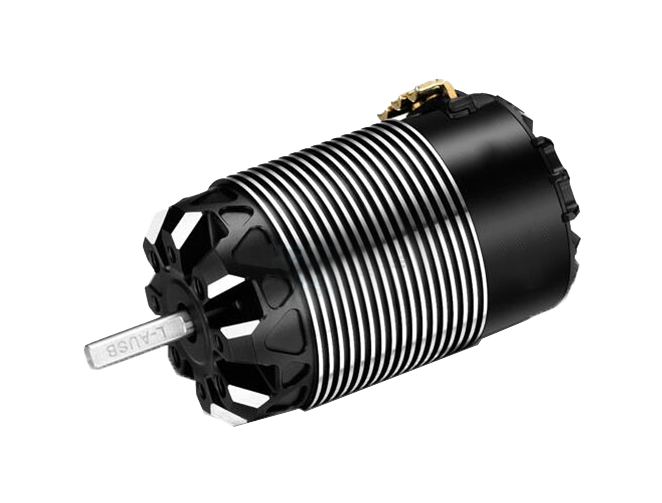
- Types of Motors:
- Brushed Motor: This is a more traditional type suitable for entry-level and some mid-level RC cars. They are simple but less efficient.
- Brushless Motor: Brushless motors are generally more efficient and provide more powerful performance, making them a better choice for achieving higher speeds.
- Motor Size and KV Value:
- Motor Size: Choose a motor size that fits your RC car’s dimensions and structure.
- KV Value: KV value represents the relationship between revolutions per minute and voltage. Higher KV values usually mean higher speeds. Choose an appropriate KV value based on your speed requirements.
- Voltage and Current Requirements:
- Voltage: Ensure the new motor is compatible with the voltage of your existing battery. Different motors have different voltage requirements.
- Current: Check the motor’s maximum current requirement to make sure it doesn’t exceed the rated current of your ESC and battery.
- ESC Compatibility:
- ESC Capability: Check if your ESC can support the new motor’s current and voltage requirements. If the ESC is not sufficient, you may need to upgrade it.
- ESC Type: Brushless motors usually require a brushless ESC, while brushed motors need a brushed ESC. Make sure to choose the right type of ESC.
- Cooling System:
- Fan and Heat Sink: Increasing speed may cause the motor to overheat. Consider adding a fan or heat sink to maintain proper temperature control.
- Handling and Balance:
- Handling Performance: A more powerful motor can affect the handling of the vehicle. You may need to adjust suspension, gear ratios, and other settings to maintain balance.
Before upgrading the motor, it’s recommended to understand the specifications and performance requirements of your RC car model.
Research the technical specifications of the new motor to ensure it meets your modification needs.
5.Gear Ratio
Apart from changing batteries and motors, there’s another cost-effective method to quickly boost speed – adjusting the gear ratio.
The gear ratio directly impacts the car’s speed and performance.
When the gear ratio is larger, the output torque is smaller, but the maximum speed is higher, making it better for high-speed driving on flat surfaces.
When the gear ratio is smaller, the output torque is larger, and the speed is slower, making it better for slow-speed climbing.
If you want to increase your car’s speed, try changing your motor gear to increase the gear ratio. This, in turn, increases the overall transmission ratio, enhancing speed.
For example, if your motor gear is originally 17T (T stands for the number of teeth), and the differential gear is 57T, their transmission ratio is 17/57 = 1/3.3529.
This means the motor gear needs to rotate 3.3529 turns for the differential gear to complete one turn.
When you change the 17T motor gear to 19T, 19/57 = 1/3.
Now, the motor only needs to rotate 3 turns for the differential gear to complete one turn.
Assuming the motor’s speed is 3000 revolutions per minute,
3.3529/3000 = 894.74783
3/3000 = 1000
Just by changing one gear, the speed will increase by 105 revolutions per minute. The difference of two teeth can significantly boost speed.

However, it’s crucial to note that if you adjust too much, the torque may decrease significantly, leading to potential issues like motor overload, excessive battery discharge, which could damage electronic devices.
Therefore, after making adjustments, check the temperature of the battery, motor, and electronic speed controller.
If there are any abnormalities, consider reverting to a lower gear ratio to prevent damage to electronic devices.
6.Choosing Tires
The tires of a RC model car have a significant impact on the speed, especially in racing scenarios. If you want make your RC car faster,Here are some suggestions on how tires affect speed and tips for selecting them:
- Rubber Hardness: The hardness of the tire’s rubber directly affects traction. On dry, high-temperature tracks, harder tires are usually chosen to reduce rolling resistance and increase speed. In wet or cold conditions, softer tires provide better traction.
- Tread Design: Different tire tread designs are suitable for different track surfaces. Smooth or low-tread tires are often preferred on flat indoor tracks, while tires with deep tread patterns offer better traction on outdoor off-road tracks.
- Tire Size: Larger tires generally provide better stability and terrain capability but may impact speed. Smaller tires are suitable for tracks that require faster acceleration and higher speeds.
- Tire Width: Wider tire treads typically offer more traction but may increase rolling resistance. If aiming for straight-line speed, narrowing the tire width can reduce rolling resistance and aerodynamic drag, significantly boosting the car’s speed. However, in racing situations, a balance between traction and rolling resistance is crucial, as wider tires provide better traction during turns.
In summary, tire selection should consider factors such as track type, surface conditions, and temperature. Practical testing and experience play a vital role in choosing the right tire combination.
In racing scenarios, continuous experimentation with different tire setups is often needed to find the most suitable configuration for the current track conditions.
7.Servo Upgrade
A servo in an RC model car is primarily responsible for steering the vehicle.
While the servo itself does not directly impact the speed of the car, good servo performance can enhance the vehicle’s maneuverability, allowing it to steer more flexibly and achieve faster cornering speeds.
As the saying goes, “Fast in the corners is truly fast.” Here are some suggestions regarding the impact of servos and how to choose a suitable servo:
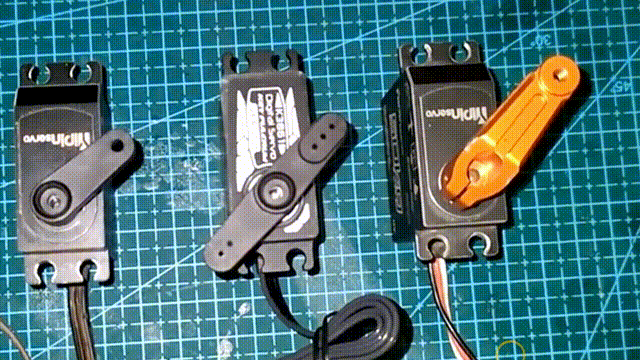
- Response Speed: The response speed of the servo determines the turning speed of the vehicle. A faster response speed means more responsive control. In racing scenarios, servos with higher response speeds are typically chosen to quickly adapt to changes on the track.
- Torque: The torque of the servo indicates the force it can exert, corresponding to the steering force of the vehicle. Higher torque is generally suitable for larger vehicles or off-road terrain, while moderate torque is sufficient for lightweight racing cars.
- Precision: Good servo precision ensures the stability of the vehicle when driving in a straight line. This is particularly crucial for racing vehicles because precise steering helps the vehicle navigate through corners more quickly.
- Durability: Durability is another consideration in servo selection. In racing, vehicles may experience high-intensity movements such as bumps and jumps, so it’s important to choose a servo with good durability.
- Digital vs. Analog: Digital servos are typically more precise and easier to adjust than analog servos. In racing scenarios, digital servos may be more popular.
8.GPS Module
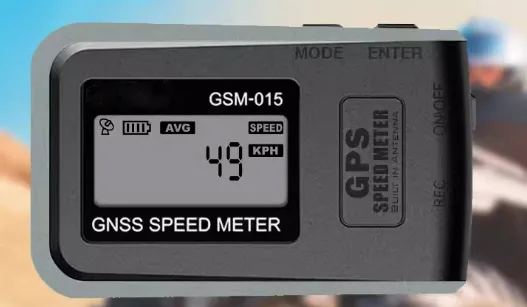
The GPS module in RC model cars is primarily used to measure the vehicle’s position, speed, and travel trajectory. Although the GPS module itself does not directly impact the speed of the RC model car, it provides essential data such as speed measurement, real-time speed display, etc.
This information can be utilized for comparative analysis and enhancing the performance of the vehicle.
9.Gyroscope
The gyroscope in RC model cars is primarily used to stabilize the vehicle’s movement and enhance maneuverability.
While the gyroscope itself does not directly affect the speed of the model car, it does influence the vehicle’s stability and responsiveness to some extent, indirectly impacting overall performance. Here are the potential effects of a gyroscope on the speed aspect of model cars:

- Stability: By detecting the tilt and deviation of the vehicle, the gyroscope can quickly make adjustments to maintain the vehicle’s balance. During high-speed driving or sharp turns, the gyroscope can prevent the vehicle from losing control, improving stability and making the vehicle easier to control.
- Traction: By timely adjusting the vehicle’s posture, the gyroscope helps maintain traction. This is especially crucial on the racetrack, as good traction can enhance the vehicle’s speed through corners.
- Driving Experience: The gyroscope can enhance the driving experience, making it easier for the driver to control the vehicle, particularly for beginners or drivers navigating complex tracks.
It’s worth noting that some competitive environments may limit or prohibit the use of a gyroscope because, in certain situations, drivers may prefer to have full control over the vehicle without relying on automatic stabilization systems.
10.Differential Tuning
Differential in RC model cars allows the two wheels on either side to rotate at different speeds, accommodating curves and turns during vehicle movement. Tuning the differential can impact the speed and handling of the model car, and different tuning methods affect the stability and maneuverability of the vehicle.
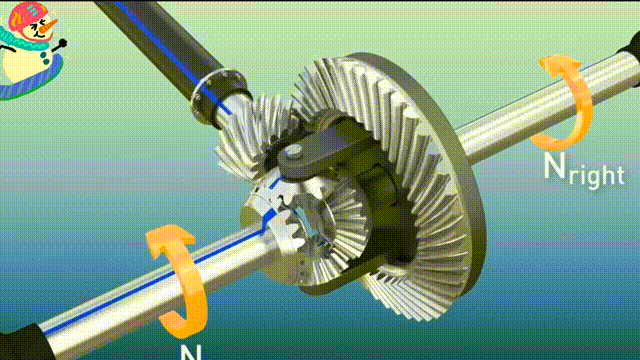
The most common tuning method involves changing the differential oil, with its viscosity typically indicated by “Weight” (e.g., 50wt, 100wt). Higher numbers represent thicker oil. In general:
- Thicker Differential Oil: Using a higher Weight differential oil increases the locking effect of the differential, causing the wheels to rotate more closely in sync. This setup usually enhances the car’s maneuverability during turns, increasing traction.
- Thinner Differential Oil: Using a lower Weight differential oil reduces the locking effect, allowing the wheels to slide more easily relative to each other. This setup often improves stability during straight-line driving but may reduce maneuverability during turns.
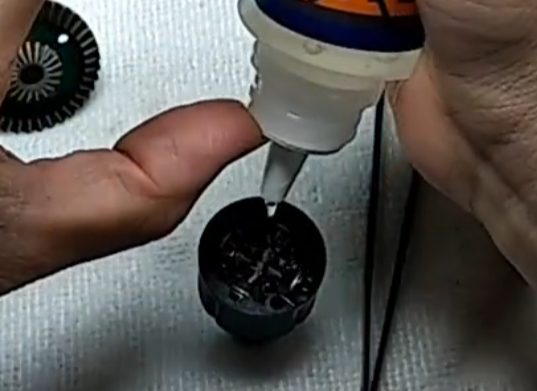
Some tuning suggestions for differentials include:
- Sensitivity Adjustment: Adjust the sensitivity of the differential based on specific needs. Increasing sensitivity makes the vehicle more agile but may reduce stability during straight-line driving. Decreasing sensitivity helps improve stability during straight-line driving.
- Front and Rear Variance: Some players prefer different sensitivities for the front and rear differentials. Typically, making the front differential more sensitive while keeping the rear more stable enhances the vehicle’s maneuverability during turns.
- Terrain and Track Adaptation: Adjust differentials based on the characteristics of different terrains and tracks. On smooth tracks, you might prefer a more sensitive differential, while on rough terrain, reducing sensitivity may be more suitable.
- Real-world Testing: Actual testing is crucial for tuning. Conduct tests under various conditions, observe the impact of differential adjustments on the vehicle’s performance, and gradually optimize the settings.
Differential tuning is a complex task that requires experimentation and adjustment based on specific circumstances.
You can adjust differential performance by changing parameters such as front-to-rear differential variance, oil viscosity, and differential gear ratios.
It’s recommended to conduct practical tests in different scenarios to find the optimal differential tuning for your model car.
In simple terms, if you solely pursue the speed of the vehicle, you only need to choose a higher differential oil viscosity, as long as it does not significantly affect the stability of the car.
11.Shock Absorber Tuning
The shock absorbers of an RC model car have an impact on the vehicle’s handling and stability, indirectly influencing its speed. Here are some effects and tuning suggestions related to shock absorbers and speed:
- Effects:
- Handling and Stability: One of the primary functions of shock absorbers is to absorb and dampen the vibrations and impacts the vehicle experiences on uneven surfaces.
- Well-tuned shock absorbers can enhance the vehicle’s handling, making it more capable of dealing with bumps and curves during high-speed driving.
- A stable suspension system contributes to maintaining the vehicle’s stability and traction during high-speed maneuvers.

2.Tuning for Increased Speed:
- Adjusting Hardness: When pursuing higher speeds, consider increasing the hardness of the shock absorbers.
- Harder shock absorber settings help reduce the vehicle’s body roll during turns, improving overall handling.
- However, it’s essential to be cautious as excessively stiff settings may lead to a loss of traction on bumpy surfaces, affecting stability.
3.Tuning for Different Road Conditions:
- Adjustable Shock Absorbers: Some RC model cars feature adjustable shock absorbers. You can use nuts to tighten or loosen the shock absorber springs, thereby altering their hardness.
- Adjustments can be made based on different road conditions. Additionally, changing the viscosity of the shock absorber damping oil allows you to fine-tune the shock absorber’s hardness.
- On rough or uneven terrain, lowering the shock absorber hardness enhances adaptability to irregular surfaces. On smooth race tracks, increasing hardness improves overall handling.
4.Front and Rear Shock Absorber Tuning:
- Differential Tuning: Some players prefer setting different hardness levels for front and rear shock absorbers.
- In certain situations, tuning the front shock absorbers to be stiffer than the rear ones can contribute to improved stability during turns. This setup may offer better overall control in specific scenarios.
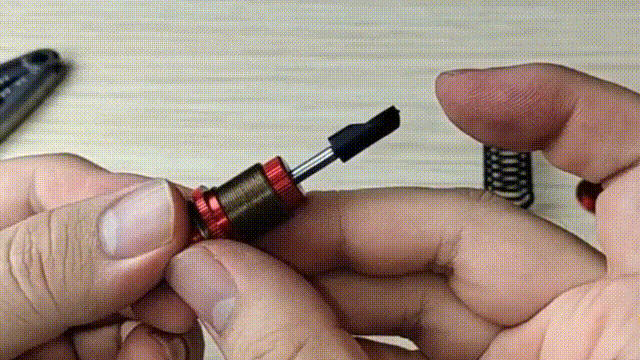
These tuning suggestions aim to optimize the performance of the shock absorbers based on individual preferences, driving style, and the characteristics of the terrain.
It’s recommended to conduct practical tests in various conditions to gradually find the most suitable shock absorber tuning settings for your RC model car.
12.Camber and Toe
When we talk about the tilt and toe of RC model cars, we are essentially discussing adjustment parameters of the suspension system, which directly impact the vehicle’s handling performance.
Camber:
- Definition: Camber refers to the angle between the wheel and the vertical axis, usually expressed in degrees. Positive camber means the top of the wheel tilts outward, while negative camber means the top of the wheel tilts inward.
- Impact: Proper camber adjustment can affect the contact area between the wheels and the ground, thereby influencing the vehicle’s traction in corners. Positive camber is often used to enhance straight-line stability, while negative camber aids agility in turns.
- In off-road vehicles, a slight positive camber is often chosen for the front wheels to improve straight-line stability and traction.
- Setting approximately 0 to +2 degrees of positive camber allows for fine-tuning based on track conditions and individual driving style.
- The camber for the rear wheels is typically slightly less than that of the front wheels, often set in the range of 0 to -2 degrees.
- Negative rear camber helps improve the vehicle’s handling in turns.

Toe:
- Definition: Toe refers to the angle between the wheels in the longitudinal direction, i.e., the angle between the front and rear edges of the wheels. Toe can be a positive value (front edges pointing outward) or a negative value (front edges pointing inward).
- Impact: Proper toe adjustment can affect the vehicle’s straight-line stability and turning performance. Positive toe is generally used to enhance straight-line stability, while negative toe contributes to improved agility during turns.
- In general, adjusting the front toe of off-road vehicles can be done in the range of 0 to +2 millimeters.
- Positive toe helps improve straight-line stability, but excessive positive toe may reduce turning performance.
- Rear toe adjustment is typically in the range of 0 to -2 millimeters, with a slight negative toe contributing to better handling in turns.
- Some individuals may even choose a larger negative toe, depending on personal preferences and track requirements.

13.Layout and wiring organization of electronic devices
The layout and wiring organization of electronic devices in RC model cars are crucial as they directly impact the vehicle’s stability and reliability. Here are some suggestions and points to consider:
Low Center of Gravity:
- Aim to position electronic devices as low as possible on the vehicle chassis to lower the center of gravity and enhance stability.
Balanced Layout:
- Distribute electronic devices evenly on both the front and rear, as well as left and right sides of the vehicle, ensuring uniform weight distribution for improved balance and handling.
Cable Management:
- Use tools like mounting clips and zip ties to organize cables, preventing tangled wires that could interfere with the vehicle’s operation and tuning.
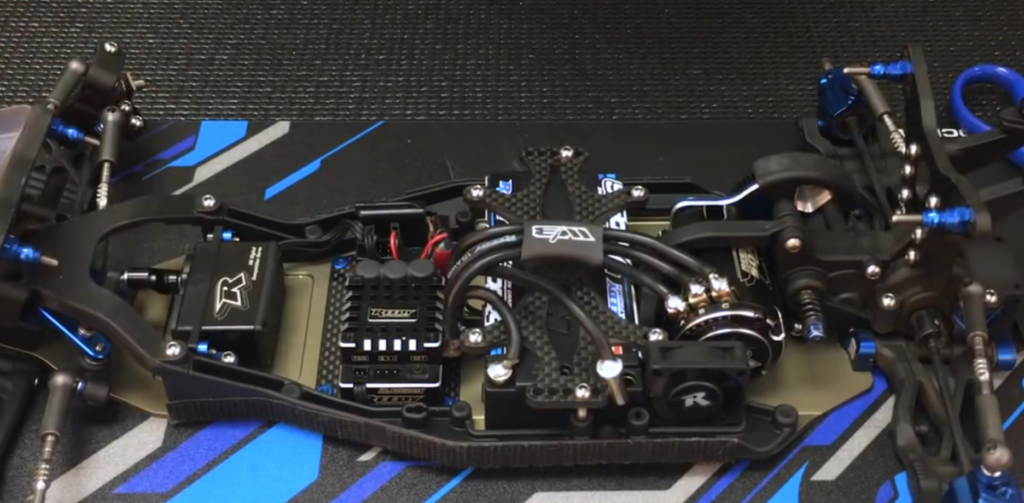
In summary, the layout and wiring organization of electronic devices should be adjusted based on the specific type of RC model car and its usage scenario. Considering factors such as center of gravity, balance, and cable management can contribute to enhancing the vehicle’s speed and reliability.
14.Tire Balance
Good tire balance can reduce vibrations when the vehicle is traveling at high speeds, helping to maintain straight-line driving and stability in handling, thus contributing to increased speed. Unbalanced tires can cause shaking during high-speed driving, not only resulting in a loss of engine power but also posing a risk of the vehicle veering off course, making it difficult to control.
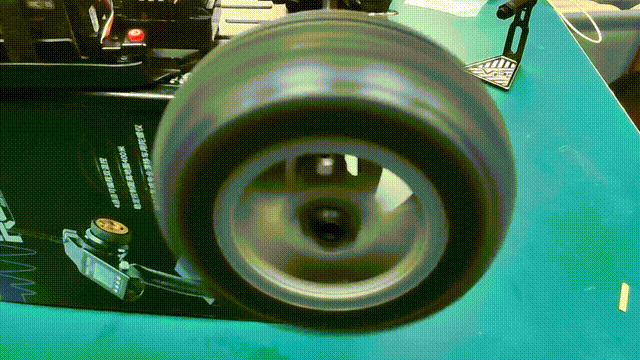
Methods for adjusting tire dynamic balance:
Using a balancer:
A tire balancer is a specialized tool used to measure the balance of a tire while it is rotating. By using a balancer, you can determine whether the tire needs adjustment for balance.
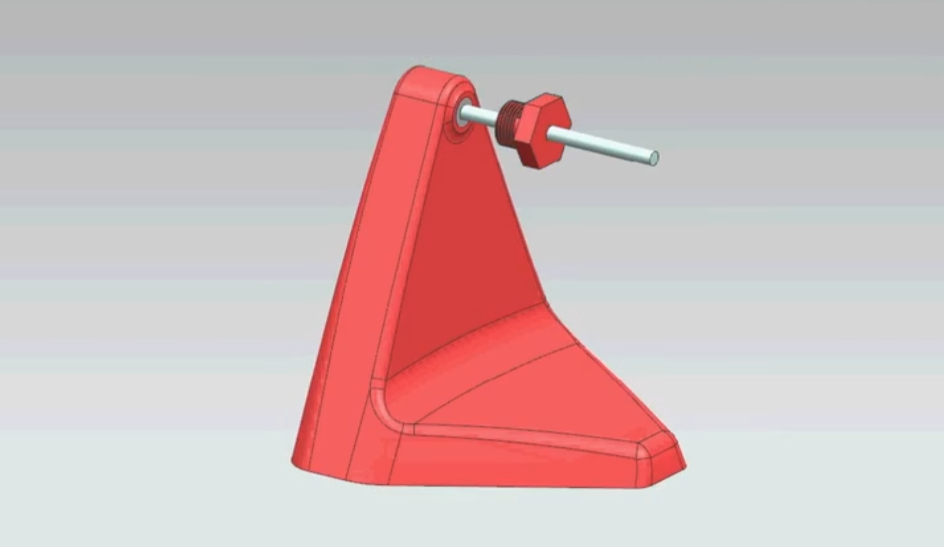
- Adding balance weights::
- Based on the measurements from the balancer, add balance weights of the appropriate weight to the tire. Balance weights are typically installed on the inner side of the tire, near the position of the wheel hub.
- Evenly distribute balance weights:
- Ensure that the added balance weights are evenly distributed on the tire to maintain overall balance. Balance weights at different positions can adjust balance in different directions.
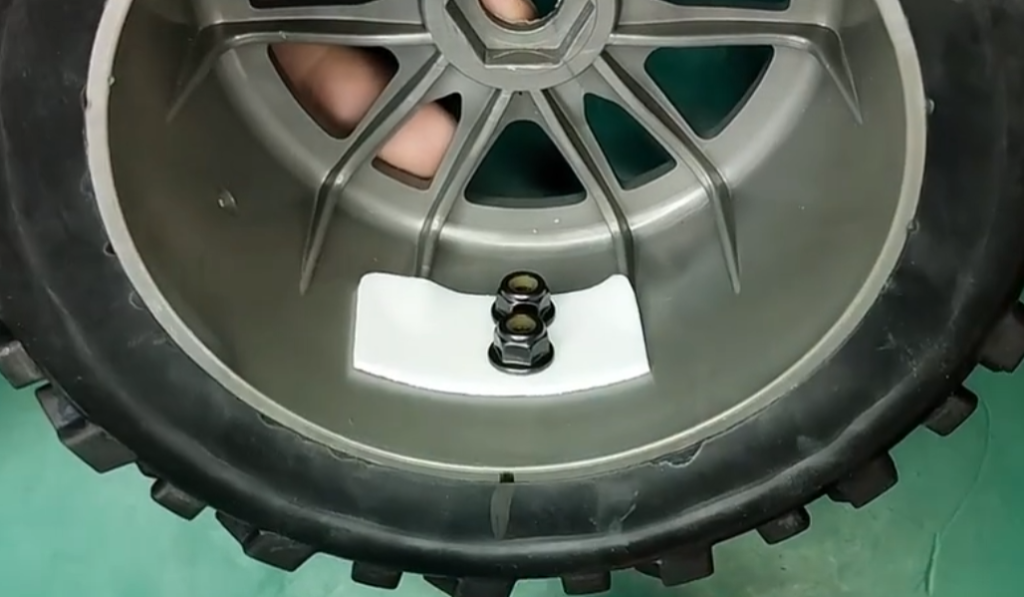
- Tire rotation:
- After adding balance weights, rotate the tire several times to ensure the symmetric placement of the balance weights and prevent tire eccentricity.
- Check other factors:
- Ensure that the wheel axles, hubs, and other related components are not damaged or misaligned. These factors may also affect the overall tire dynamic balance.
- Balance testing:
- Lift the adjusted vehicle, apply high-speed throttle, and test if there is any vibration in the tires to ensure they have been properly tuned.

When adjusting tire dynamic balance, be sure to keep the wheel hubs clean and ensure that the balance weights are securely attached. You wouldn’t want them to come off during a race.
15.Full bearing
A well-designed bearing can significantly reduce friction, minimizing mechanical energy loss. This means more energy is converted into the vehicle’s motion, thereby increasing spee

How to choose good bearings:
- Material Quality:
- Examine the material of the bearings, such as whether high-quality materials like stainless steel or ceramics are used. High-quality materials typically offer better wear resistance and corrosion resistance.
- Manufacturing Precision:
- Check the ABEC rating of the bearings, which indicates manufacturing precision. A higher ABEC rating usually signifies higher manufacturing precision, but in RC model cars, an appropriate ABEC rating is typically between 3 and 7.
- Sealing Design:
- Inspect the sealing design of the bearings to see if it effectively prevents dust, sand, and moisture from entering the interior. Effective sealing helps reduce friction and prolong the life of the bearings.
- Smooth Rotation:
- Feel the smoothness of the bearing’s rotation by hand. High-quality bearings should rotate smoothly without any abnormal resistance or sticking.
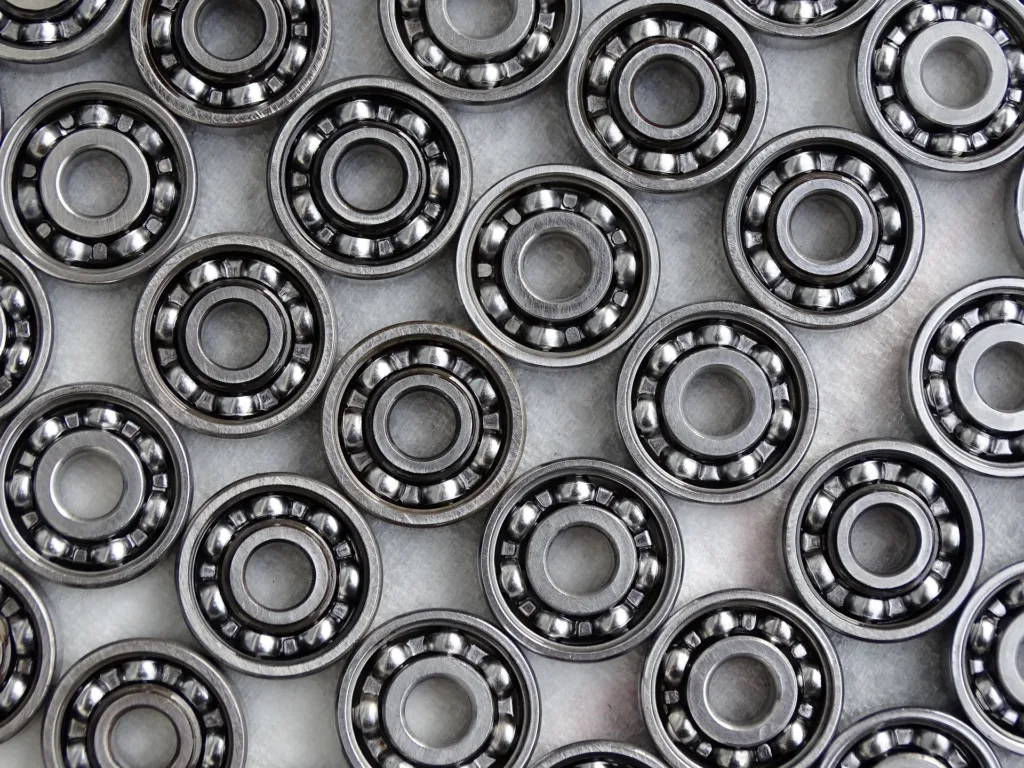
16.Electronic accessories cooling
If you frequently engage in prolonged high-speed driving or racing, a good cooling system is crucial for maintaining vehicle performance.
Excessive high temperatures can cause a decline in motor and ESC performance, potentially triggering severe thermal protection responses in the motor, slowing down the vehicle.
In extreme cases, overheating may lead to damage to the motor or ESC.
1.Cooling Fan:
- Installing cooling fans around the motor and ESC is a common practice. Fans can provide airflow to reduce component temperatures. Choose efficient fans and ensure their normal operation.
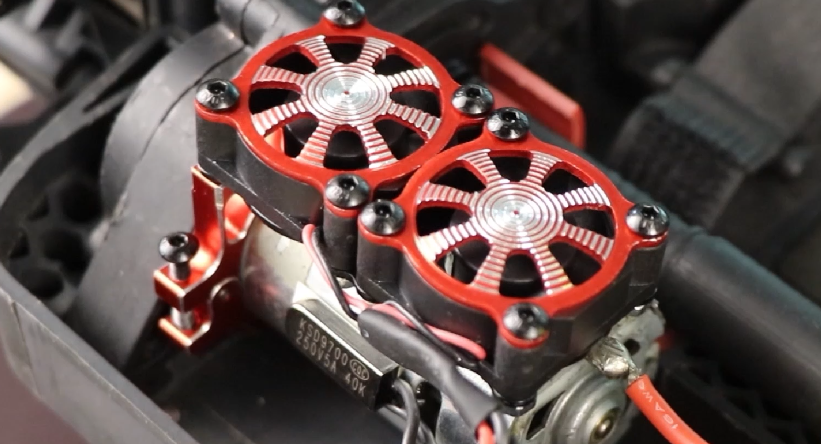
2.Metal Heat Sinks:
- For the motor and ESC, installing metal heat sinks can effectively enhance the cooling effect. Metal heat sinks can absorb and dissipate heat, preventing overheating.
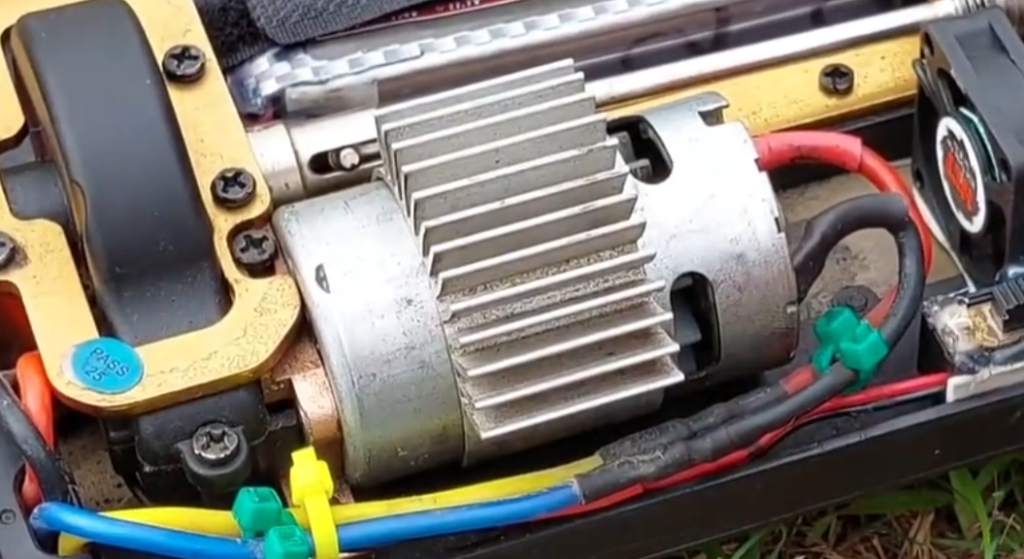
3.Maintain Ventilation:
- Ensure that the vehicle design allows air to flow smoothly through key components such as the motor, ESC, and battery.
- Do not block ventilation openings in critical areas, but keep in mind that increased aerodynamic resistance may slow down the vehicle. It’s essential to strike a balance to ensure the optimal solution.
The above are 16 modifications to enhance speed and performance. Of course, if you just want to modify your car for fun and don’t want to spend a lot of money, there are some cheap ways to do it,Hope it helps!
PS: If you have a purchasing need for RC model car tires, you can visit our homepage.
We are a wholesale company for model car tires in China, specializing in the field for ten years.
We have our own factory and hundreds of sets of molds, supporting fast customization and production. Your inquiries are welcome.


